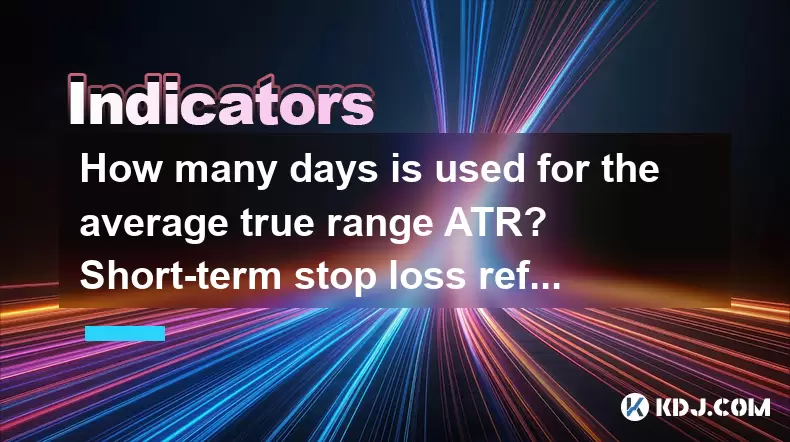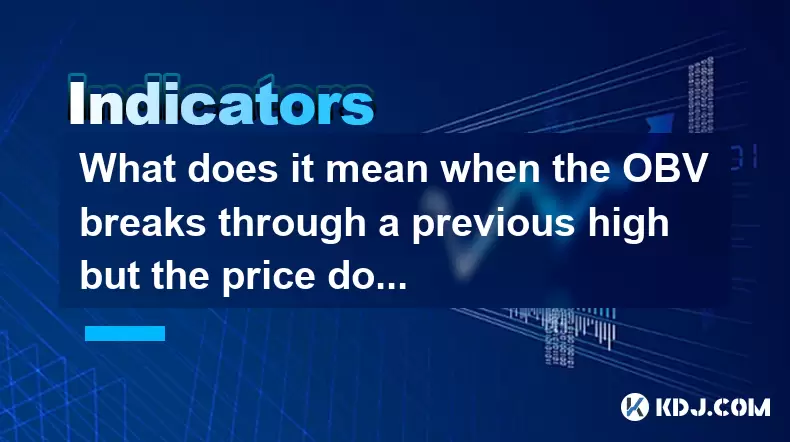-
 Bitcoin
Bitcoin $116700
0.24% -
 Ethereum
Ethereum $3973
4.34% -
 XRP
XRP $3.283
7.68% -
 Tether USDt
Tether USDt $1.000
0.01% -
 BNB
BNB $789.8
2.27% -
 Solana
Solana $176.2
3.31% -
 USDC
USDC $0.9999
0.00% -
 Dogecoin
Dogecoin $0.2238
5.14% -
 TRON
TRON $0.3389
-0.51% -
 Cardano
Cardano $0.7907
4.03% -
 Stellar
Stellar $0.4527
10.02% -
 Hyperliquid
Hyperliquid $41.07
4.27% -
 Sui
Sui $3.794
1.77% -
 Chainlink
Chainlink $19.49
10.40% -
 Bitcoin Cash
Bitcoin Cash $580.9
0.74% -
 Hedera
Hedera $0.2617
4.32% -
 Avalanche
Avalanche $23.41
3.67% -
 Ethena USDe
Ethena USDe $1.001
-0.03% -
 Litecoin
Litecoin $122.4
1.38% -
 Toncoin
Toncoin $3.364
1.49% -
 UNUS SED LEO
UNUS SED LEO $8.988
0.37% -
 Shiba Inu
Shiba Inu $0.00001295
2.82% -
 Uniswap
Uniswap $10.62
5.75% -
 Polkadot
Polkadot $3.922
4.46% -
 Dai
Dai $1.000
0.01% -
 Bitget Token
Bitget Token $4.494
2.15% -
 Monero
Monero $268.0
-1.30% -
 Cronos
Cronos $0.1523
3.68% -
 Pepe
Pepe $0.00001127
4.43% -
 Aave
Aave $285.4
4.85%
How many days is used for the average true range ATR? Short-term stop loss reference
The ATR, a key volatility measure in crypto trading, is typically calculated over 14 days and helps set stop-loss levels based on market fluctuations.
Jun 01, 2025 at 11:49 pm

The Average True Range (ATR) is a widely used technical indicator in the cryptocurrency trading world, which helps traders measure volatility and set appropriate stop-loss levels. The ATR is calculated over a specified period, and the most commonly used timeframe for the ATR calculation is 14 days. This article will delve into the details of the ATR, its calculation, and how it can be effectively used as a short-term stop-loss reference in the cryptocurrency market.
Understanding the Average True Range (ATR)
The Average True Range (ATR) was developed by J. Welles Wilder Jr. and is primarily used to measure market volatility. In the context of cryptocurrencies, volatility is a critical factor that traders need to consider. The ATR provides a numerical value that represents the average range of price movement over a specified period, helping traders gauge the potential risk and set stop-loss levels accordingly.
Calculating the ATR
The ATR is calculated by taking the average of the true ranges over a specified period. The true range is the greatest of the following:
- The current high minus the current low.
- The absolute value of the current high minus the previous close.
- The absolute value of the current low minus the previous close.
To calculate the ATR over 14 days, you would follow these steps:
- Calculate the true range for each day over the 14-day period.
- Average these true ranges to get the initial ATR value.
- For subsequent days, use the formula: ATR = [(Previous ATR * 13) + Current True Range] / 14.
This method ensures that the ATR is a moving average that adjusts to recent price movements, making it a dynamic tool for assessing volatility.
Using ATR for Short-Term Stop Loss
Setting a short-term stop loss using the ATR involves using the indicator to determine an appropriate distance from the entry price at which to place the stop loss. This distance is often calculated as a multiple of the ATR value. Here’s how you can set a short-term stop loss using the ATR:
- Determine the ATR value for the cryptocurrency you are trading. For a 14-day ATR, you would use the most recent 14-day ATR value.
- Choose a multiplier based on your risk tolerance. Common multipliers range from 1 to 3, with higher multipliers indicating a greater distance from the entry price.
- Calculate the stop loss level by multiplying the ATR value by your chosen multiplier and then subtracting this value from your entry price for a long position, or adding it to your entry price for a short position.
For example, if the 14-day ATR for Bitcoin is 1000 USD and you choose a multiplier of 2, your stop loss for a long position would be set at 2000 USD below your entry price.
Practical Application in Cryptocurrency Trading
In the volatile world of cryptocurrencies, using the ATR for setting stop losses can be particularly beneficial. Cryptocurrencies like Bitcoin and Ethereum can experience significant price swings within short periods, and the ATR helps traders account for these movements when setting stop-loss levels.
- Identify the current market trend to decide whether to use a long or short position.
- Calculate the ATR using the most recent 14-day period.
- Set your stop loss using the ATR multiplier method described above.
- Monitor the market and adjust your stop loss as necessary based on changes in the ATR value and market conditions.
Adjusting ATR Settings for Different Timeframes
While the 14-day period is standard, traders can adjust the ATR timeframe to suit their trading style and the specific cryptocurrency they are trading. For short-term traders, a shorter timeframe such as 5 or 7 days might be more appropriate, while long-term traders might prefer a longer period such as 20 or 30 days.
- For short-term trading, a shorter ATR period can provide more responsive stop-loss levels that adjust quickly to recent price movements.
- For long-term trading, a longer ATR period can help smooth out short-term volatility and provide a more stable measure of market conditions.
Limitations and Considerations
While the ATR is a powerful tool for setting stop losses, it is not without its limitations. The ATR does not predict price direction; it only measures volatility. Therefore, it should be used in conjunction with other technical indicators and fundamental analysis to make well-rounded trading decisions.
- Market conditions can change rapidly, and the ATR value may not always reflect the current volatility accurately.
- False signals can occur, especially in highly volatile markets where prices can spike and then reverse quickly.
- Over-reliance on the ATR for setting stop losses can lead to being stopped out prematurely if the market experiences a temporary spike in volatility.
Frequently Asked Questions
Q: Can the ATR be used for all cryptocurrencies?
A: Yes, the ATR can be used for all cryptocurrencies. However, the effectiveness of the ATR may vary depending on the specific cryptocurrency's volatility and trading volume. Highly volatile cryptocurrencies may require more frequent adjustments to the ATR settings.
Q: How often should I recalculate the ATR?
A: The frequency of recalculating the ATR depends on your trading strategy. For short-term trading, you might recalculate the ATR daily or even intraday to stay current with market volatility. For longer-term trading, weekly or monthly recalculations might be sufficient.
Q: Is there a best multiplier to use for the ATR when setting stop losses?
A: There is no universally best multiplier for the ATR when setting stop losses. The choice of multiplier depends on your risk tolerance and the specific market conditions. A multiplier of 1 to 3 is commonly used, but you may need to adjust this based on your trading experience and the volatility of the cryptocurrency you are trading.
Q: Can the ATR be used for other purposes besides setting stop losses?
A: Yes, the ATR can be used for other purposes in trading. It can help in determining position sizing, setting profit targets, and assessing the overall risk of a trade. By understanding the volatility of a cryptocurrency, traders can make more informed decisions about their trading strategies.
Disclaimer:info@kdj.com
The information provided is not trading advice. kdj.com does not assume any responsibility for any investments made based on the information provided in this article. Cryptocurrencies are highly volatile and it is highly recommended that you invest with caution after thorough research!
If you believe that the content used on this website infringes your copyright, please contact us immediately (info@kdj.com) and we will delete it promptly.
- Navigating the Crypto Market in 2025: Smart Decisions for the Meme Supercycle
- 2025-08-09 08:50:12
- DeFi, Tokenized Stocks, and NFTs: A Wild Ride in the Crypto Cosmos
- 2025-08-09 08:30:11
- AERO Price Skyrockets: Aerodrome Finance Sees Massive Surge Amid Coinbase Buzz
- 2025-08-09 08:55:19
- Coinbase, Cosmos, and dYdX: Navigating the Crypto Currents
- 2025-08-09 06:30:16
- BNB Price, Altcoins, and Predictions: What's the Buzz?
- 2025-08-09 06:30:16
- Crypto Presale Projects Primed for Gains in 2025: A New Yorker's Take
- 2025-08-09 06:50:15
Related knowledge

What does it mean when the Williams' oscillator repeatedly hits bottoms but fails to rebound?
Aug 09,2025 at 09:28am
Understanding the Williams %R OscillatorThe Williams %R oscillator, developed by Larry Williams, is a momentum indicator used in technical analysis to...

When the J line in the KDJ indicator suddenly turns downward after being continuously overbought, does it indicate a top?
Aug 09,2025 at 06:35am
Understanding the KDJ Indicator and Its ComponentsThe KDJ indicator is a momentum oscillator widely used in cryptocurrency technical analysis to ident...

What does it mean when the TRIX indicator suddenly diverges downward after a long period of convergence?
Aug 09,2025 at 12:56am
Understanding the TRIX Indicator in Cryptocurrency TradingThe TRIX indicator, or Triple Exponential Average, is a momentum oscillator used in technica...

What does it mean when the OBV breaks through a previous high but the price doesn't reach a new high?
Aug 09,2025 at 07:57am
Understanding the On-Balance Volume (OBV) IndicatorThe On-Balance Volume (OBV) is a technical analysis indicator that uses volume flow to predict chan...

Why is the rise limited after a MACD bottoming divergence?
Aug 09,2025 at 12:07am
Understanding MACD Bottoming Divergence in Cryptocurrency TradingThe MACD (Moving Average Convergence Divergence) is a widely used technical indicator...

What does it mean when the OBV continues to rise but the price is trading sideways?
Aug 08,2025 at 10:35pm
Understanding On-Balance Volume (OBV)On-Balance Volume (OBV) is a technical indicator that uses volume flow to predict changes in stock or cryptocurre...

What does it mean when the Williams' oscillator repeatedly hits bottoms but fails to rebound?
Aug 09,2025 at 09:28am
Understanding the Williams %R OscillatorThe Williams %R oscillator, developed by Larry Williams, is a momentum indicator used in technical analysis to...

When the J line in the KDJ indicator suddenly turns downward after being continuously overbought, does it indicate a top?
Aug 09,2025 at 06:35am
Understanding the KDJ Indicator and Its ComponentsThe KDJ indicator is a momentum oscillator widely used in cryptocurrency technical analysis to ident...

What does it mean when the TRIX indicator suddenly diverges downward after a long period of convergence?
Aug 09,2025 at 12:56am
Understanding the TRIX Indicator in Cryptocurrency TradingThe TRIX indicator, or Triple Exponential Average, is a momentum oscillator used in technica...

What does it mean when the OBV breaks through a previous high but the price doesn't reach a new high?
Aug 09,2025 at 07:57am
Understanding the On-Balance Volume (OBV) IndicatorThe On-Balance Volume (OBV) is a technical analysis indicator that uses volume flow to predict chan...

Why is the rise limited after a MACD bottoming divergence?
Aug 09,2025 at 12:07am
Understanding MACD Bottoming Divergence in Cryptocurrency TradingThe MACD (Moving Average Convergence Divergence) is a widely used technical indicator...

What does it mean when the OBV continues to rise but the price is trading sideways?
Aug 08,2025 at 10:35pm
Understanding On-Balance Volume (OBV)On-Balance Volume (OBV) is a technical indicator that uses volume flow to predict changes in stock or cryptocurre...
See all articles

























































































